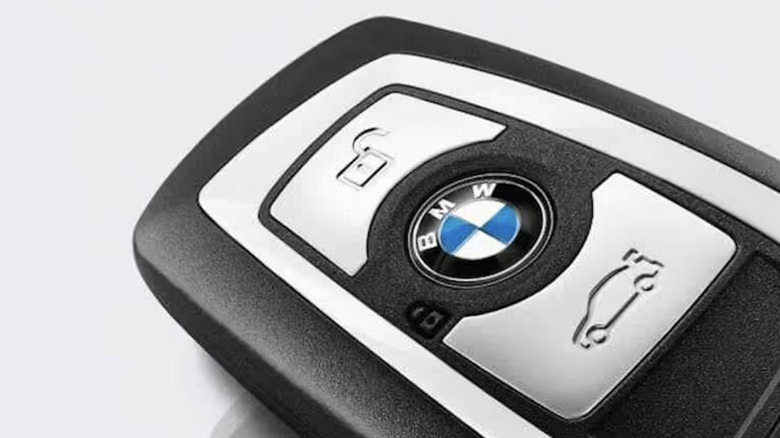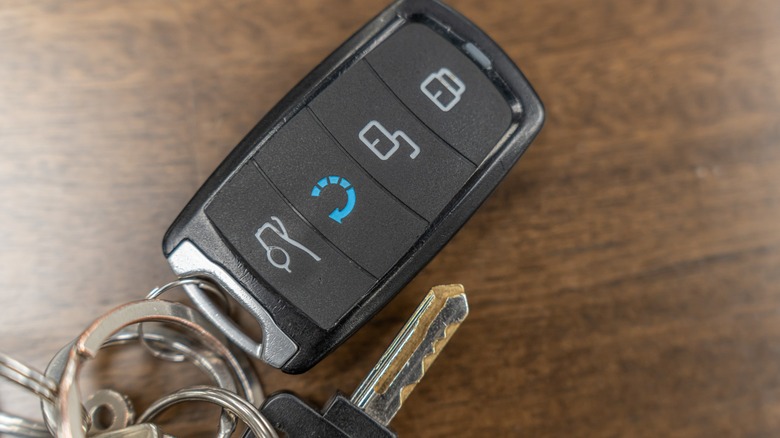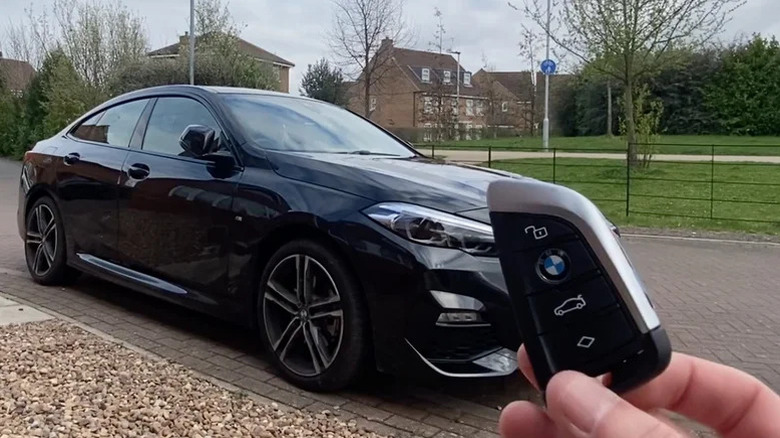How Did Key Fobs Get Their Name?
It's funny that some words just seem to "fit" their definitions. A key fob, for example, sounds exactly like what it is — a little trinket that hangs from your keys. Of course, a key fob is actually a sophisticated electronic device that allows you to remotely perform certain functions that your car key would typically accomplish, such as locking and unlocking the doors or opening the trunk. While "fob" sounding right might be just a coincidental quirk, what "fob" actually means is somewhat open-ended.
For well over 100 years, the word "fob" has been used to denote little items you would clip onto your person, whether they were electronic or not. The word originally entered the English language in either the 18th or 19th centuries, and was originally related to pocket watches. The word "fob" — which comes from "fuppe," the German word for "pocket" — is defined as either the pocket the watch is kept in, the chain attached to the pocket watch, or — most importantly — any ornament attached to the chain. Eventually, "fob" would denote items hanging not just from our pocket watch chains, but also our keys.
This is likely how the three-letter name for remote keyless devices came to be, but "fob" has another widely-used definition, too: "frequency operated button." Both uses of "fob" perfectly fit the device, though the latter ignores the earlier German-originated term.
Fob is almost certainly a backronym
There doesn't seem to be any definitive consensus on whether or not fobs were called "frequency operated buttons" from the start. It's more likely that "fob" is a "backronym," which is when an acronym is applied to a pre-existing name because it's apt. Rather than "fob" being short for "frequency operated button," the latter phrase probably came about because the traditional use of the word was already being applied to the small keychain device.
The first mass-produced car to use a remote keyless system was the 1983 AMC/Renault Alliance, but it took about a decade for key fobs to become mainstream. Without confirmation from someone in the room at Alliance, we may never know which came first — the word or the acronym.
Either way, "frequency operated button" is a very appropriate description of the key fob, since a button is used to remotely interact with the car, and a uniquely coded radio frequency is necessary to make sure the fob communicates with the right vehicle. In the U.S. and Japan, the tiny transmitter in the key fob typically uses a frequency of 315 MHz; in Europe, 433.92 and 868 MHz are commonly used. One important factor in the development and widespread use of the fob was engineering a battery small enough to power the transmitter.
Newer key fobs do much more than unlock your car doors
In addition to locking and unlocking your vehicle's doors, key fobs now often include other buttons. For example, many come with a panic button that has a few different uses. As the technology used in our cars is steadily advancing, with computers controlling more and more of our vehicles' core systems, key fobs are getting even more functionality; some modern cars don't even need keys at all, though there are potential risks that come with digital car keys.
There may already be hidden features on your car key fob that you don't even know about. One feature that is becoming more common is remote start, which allows you to start your engine with the push of a button. There's also the "summon" function, which allows vehicles with semi-autonomous driving capabilities to pull out of parking spots and drive right up to you.
Some modern key fobs now also have some customization features, so you can personalize the device to better suit your needs. The multifunctional diamond button on a BMW key fob, for instance, can be set to do things like remotely turn on your headlights or open the rear window.


